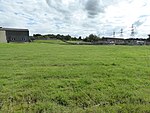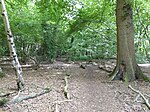Freston and Cutler's Woods with Holbrook Park
Sites of Special Scientific Interest in Suffolk

Freston and Cutler's Woods with Holbrook Park is a 142 hectare biological Site of Special Scientific Interest south of Ipswich in Suffolk. The site is in the Suffolk Coast and Heaths Area of Outstanding Natural BeautyThese ancient woods have woodland types typical of spring-fed valleys and light sandy soils. Holbrook Park has coppice stools over 3 metres in diameter, among the largest in Britain. Sweet chestnut, which was introduced in the Middle Ages, is found widely, and other trees include the rare wild service tree.Holbrook Park is private, but a public footpath goes through Cutler's Wood.
Excerpt from the Wikipedia article Freston and Cutler's Woods with Holbrook Park (License: CC BY-SA 3.0, Authors, Images).Freston and Cutler's Woods with Holbrook Park
Valley Lane, Babergh
Geographical coordinates (GPS) Address Nearby Places Show on map
Geographical coordinates (GPS)
| Latitude | Longitude |
|---|---|
| N 52.01 ° | E 1.14 ° |
Address
Valley Lane
Valley Lane
IP9 2AX Babergh
England, United Kingdom
Open on Google Maps








